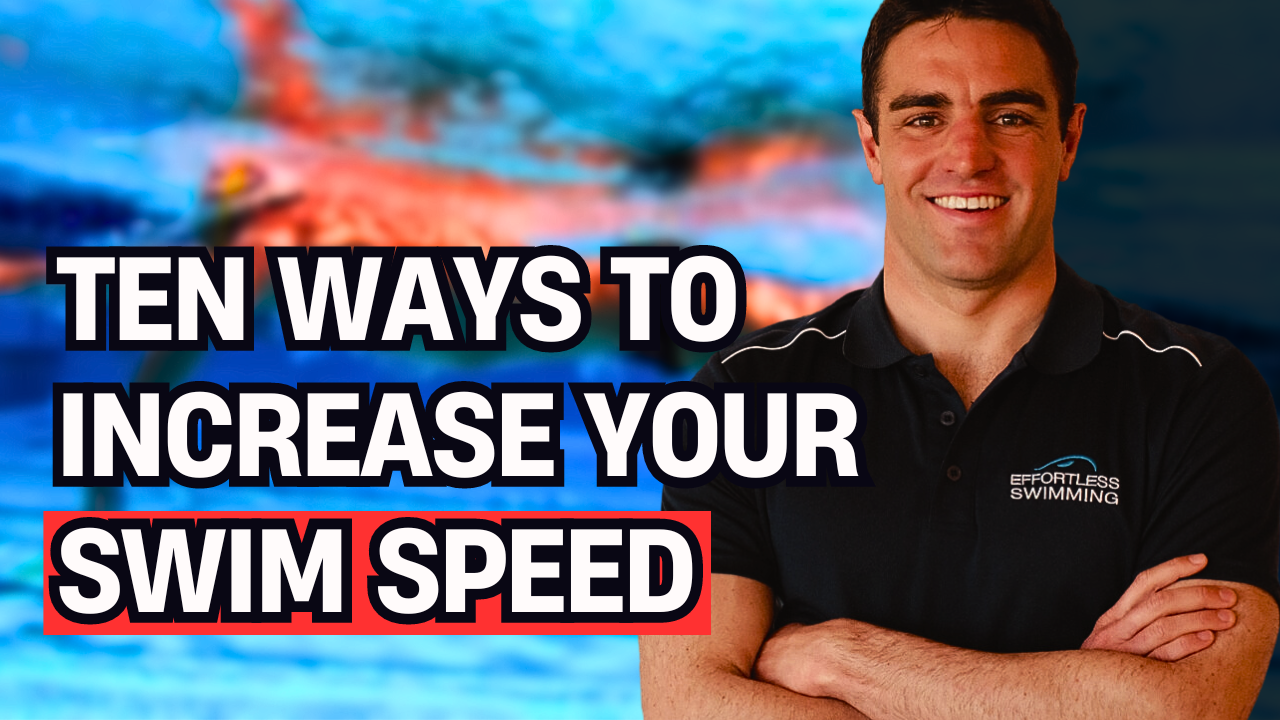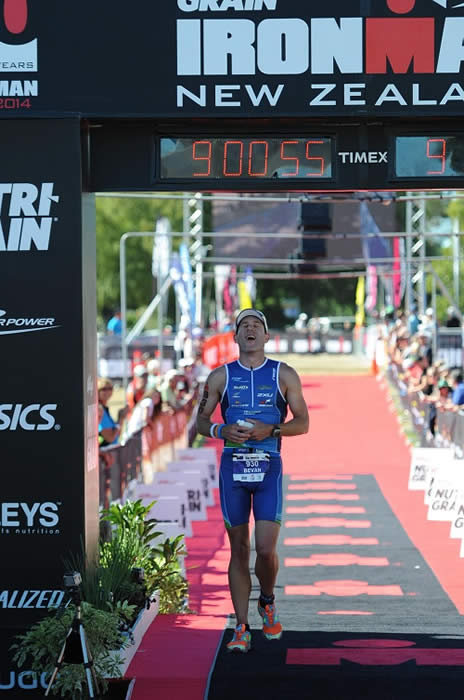In this podcast, we’ll be looking at mistakes to avoid when doing your workout.
When we have an athlete join the Effortless Swimming Membership Program, we ask them what they are doing in their swim sessions. If that athlete doesn’t come from the swim squad background, there is probably a few mistakes they are making in their swim sessions.
Think about your swimming as though you’re a race car team. There’s a lot of different variables that you can play around with to find extra time such as:
- the driver
- the race car
- how you tune the engine
- what tires you choose to drive
- how efficiently you choose to drive that car
It’s the exact same thing for swimming. You can find extra time by improving your:
- technique
- fitness
- strength and flexibility
- skills (open water or pool skills like starts and turns)
If athletes come to us and they don’t have a swim squad background, these are four common mistakes we see being made in their swim sessions:
Mistake #1: Going too hard in warm up (and not wearing fins)
In 90% of the sessions that I coach, I have my swimmers wear fins for the first 400 or 500 meters of the warm up. It’s definitely not a requirement but we found a lot of benefit to wearing them. If you haven’t done a dry land warm-up before you get in the water, then wearing fins allows you to gradually warm up your shoulders because they are usually what tighten up first.
3 Reasons to Wear Fins:
- Take pressure off your shoulders in in the beginning
- Sits you in a better body position than if you didn’t have fins on. At a slightly faster speed, it allows you to sit a little bit higher in the water and get a feel for the correct body position.
- You get a feel for what changes you need to make to your stroke to be more efficient. As you are moving faster through the water, you have a better feel of what’s creating the drag. That way, you know what kind of adjustments you need to make to your stroke, head position and body position.
The number 1 rule in warm-up is to always take it easy (except at the end of the warm-up where you might have to get your heart rate up).
Mistake #2: Always training in the grey zone
As a teenager I thought I’d get the most out of every session by going as hard as I could for everything in the session. Even if it was meant to be done easy. The problem with this is it trains the wrong heart rate zone.
If all of your sessions are done at the same pace then you are training in the ‘grey zone’. The ‘grey zone’ is the pace where you’re too fast for a recovery pace but too slow for hitting key intervals or times. It’s the pace where you feel like you’ve had a good workout but you haven’t had any variance of pace.
If you are swimming your whole session in that zone then you can’t get a feel of what kind of effort you need to put in to swim at different paces. Also, you are not training at different heart rate zones. For example, if you are at a 12×100 which are designed to be done at an aerobic heart rate (71-75% Max HR) but you are up around the 80-85% of your maximum heart rate, then you’re not getting the benefit of that swim set.
As an athlete, this is something that is very hard to do because you are used to pushing yourself and going hard. Logically, you’d think that by going harder and going faster, you are going to get more benefit from that swim set. But this is not true. As long as you’re doing what the set is designed for then you’ll get the most out of that workout.
We do a lot of variable or ascending pace in our swim sessions.
For example, we might do 4×150 building 1-4 (so the 4th 150 is the fastest one). Not only are you changing your pace and heart rate but you get a sense of how much effort you need to put in for different swim speeds.
You also get your feel for being able to change your pace in a race. If you are doing a 2km open water swim, then you know you can increase your pace for 2 minutes to catch up to a pack of swimmers in front and then bring the pace down once you’re on someone’s feet, again.
Being able to change your pace in a race only comes doing that in training.
Mistake #3: Swimming continuously for the whole session
If you didn’t come from a swim squad background you may not be breaking up your workouts. It’s rarely that I have my swimmers do anything longer than 400 meters. Most sets are broken up of 25 to 200 meter intervals. Occasionally, we’ll do some 300 or 400’s.
This is good because it allows you to rest, recover and regain your technique. If your workout is 2km without any rest, you’ll probably find your technique starts to fall apart a bit. You start to get fatigued and sore in your shoulders.
When you break a 2km set into 10×200 or 20×100 with 20 seconds of rest in between, your technique and pace will be much better.
If you are not breaking your workouts into smaller sets and without changing the pace as you go, then you’re probably training in the “grey zone”.
In the Effortless Swimming Membership, we have over 100 workouts that you can download, print off and take to the pool with you.
Mistake #4: Having no intent behind each part of your workout
If there’s no reason or purpose behind each part of your workout, don’t do it.
If your coach can’t answer why you are doing a certain part of a swim session then there’s no reason to do it. There should be a purpose to everything that you do. Whether that’s focusing on a certain part of your swim stroke, fitness, race pace or skills, there really has to be a reason to doing everything in your workout.
There is nothing less motivating than having no reason to be doing something. By tying each aspect of your swim session to your end goal it becomes much easier to do.
If you need help with your swimming, simply subscribe to the Effortless Swimming Membership where you can upload a video for an in-depth video analysis. We give you specific things to work on so that you’ll swim faster, easier and enjoy your swimming.
You can also choose from the 100+ workouts available, print them off, take them to the pool and start to have structure to your swim sessions. Also gain access to all of our video programs such as The Art of Triathlon Swimming, Effortless Freestyle and SwimGym Pro.
If you want access to all these products and workouts join the Effortless Swimming Membership here today.

















